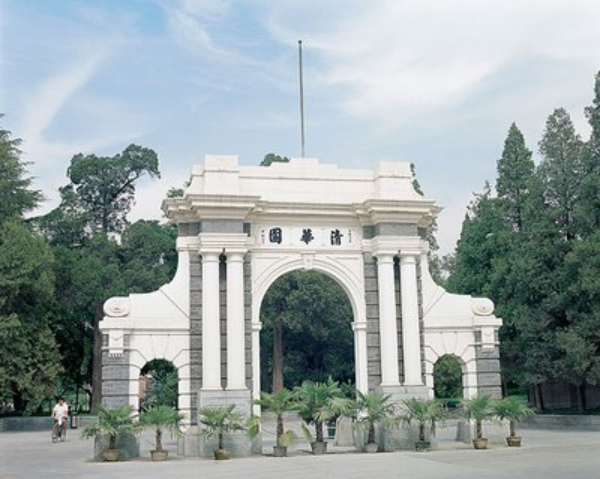
清华大学 官网链接:https://www.tsinghua.edu.cn/index.htm
清华大学的前身清华学堂始建于1911年,1912年更名为清华学校。1928年更名为国立清华大学。1937年抗日战争全面爆发后南迁长沙,与北京大学、南开大学组建国立长沙临时大学,1938年迁至昆明改名为国立西南联合大学。1946年迁回清华园,设有文、法、理、工、农等5个学院、26个系。
1952年全国高等学校院系调整后,清华大学成为一所多科性工业大学,重点为国家培养工程技术人才,被誉为“红色工程师的摇篮”。改革开放以来,清华大学逐步确立了建设世界一流大学的长远目标,进入了蓬勃发展的新时期。学校先后恢复或新建了理科、文科、医学学科和经济管理学科,并成立了研究生院和继续教育学院。1999年,中央工艺美术学院并入,成立清华大学美术学院。2012年,中国人民银行研究生部并入,成为清华大学五道口金融学院。在国家和社会的大力支持下,通过实施“211工程”“985工程”,开展“双一流”建设,清华大学在人才培养、科学研究、社会服务、文化传承创新、国际合作交流等方面都取得了长足进展。目前,清华大学共设21个学院、59个系,已成为一所设有理学、工学、文学、艺术学、历史学、哲学、经济学、管理学、法学、教育学和医学等11个学科门类的综合性、研究型大学。
面向未来,清华大学将秉持“自强不息、厚德载物”的校训和“行胜于言”的校风,坚持“中西融汇、古今贯通、文理渗透”的办学风格和“又红又专、全面发展”的培养特色,弘扬“爱国奉献、追求卓越”传统和“人文日新”精神,以习近平新时代中国特色社会主义思想为指引,深入学习贯彻党的十九大精神,坚持正确方向、坚持立德树人、坚持服务国家、坚持改革创新,持续深入推进综合改革和“双一流”建设,实现内涵式发展,努力在创建世界一流大学方面走在前列,为国家发展、人民幸福、人类文明进步作出新的更大的贡献。
Tsinghua University was established in 1911, originally under the name “Tsing Hua Imperial College”. The school was renamed "Tsing Hua College" in 1912. The university section was founded in 1925. The name “National Tsing Hua University” was adopted in 1928.
The faculty greatly valued the interaction between Chinese and Western cultures, the sciences and humanities, the ancient and modern. Tsinghua scholars Wang Guowei, Liang Qichao, Chen Yinque and Zhao Yuanren, renowned as the "Four Tutors" in the Institute of Chinese Classics, advocated this belief and had a profound impact on Tsinghua's later development.
Following the outbreak of the War of Resistance against Japanese Aggression in 1937, National Tsing Hua University, National Peking University and Nankai University merged to form Lin-shih-ta-hsueh, which was renamed the National South-West Associated University in 1938 after moving to Kunming. In 1946 the University was moved back to its original location in Beijing after the war.
Three years after the founding of the People’s Republic of China, a nationwide restructuring of institutes of higher education began, and in 1952, Tsinghua University became a multidisciplinary polytechnic university specializing in training engineers. In November of that year,the Ministry of Education appointed Jiang Nanxiang as President.
Since 1978, Tsinghua University has strengthened its teaching in sciences, economic management, humanities and law. In 1999, Tsinghua opened the School of Arts and Design by merging with the Central Academy of Arts and Design. In 2012, the Graduate School of the People's Bank of China (PBC) merged into Tsinghua University as Tsinghua University PBC School of Finance. Today, Tsinghua has become a world-leading comprehensive university that offers subject areas in engineering, science, economics, management, art, medicine, philosophy, law,literature, history and education. Students are provided diversified development paths to advance their critical thinking and entrepreneurship through research-based learning.
Over the past over 100 years, Tsinghua University has witnessed and shared the hardships and glories of the nation. The University’s motto of “Self-discipline and Social Commitment” has inspired many generations of Tsinghua teachers and students to struggle for the prosperity of China.
In 2017, Tsinghua officially released its "Double First-Class (First-Class University &First-Class Disciplines)" development plan. As one of China’s most prestigious and influential universities, Tsinghua is committed to cultivating global citizens who will thrive in today’s world and become tomorrow’s leaders.Through the pursuit of education and research at the highest level of excellence, Tsinghua is developing innovative solutions that will help solve pressing problems in China and the world.


